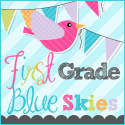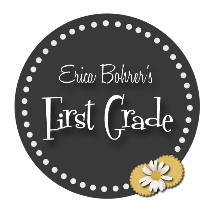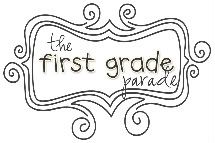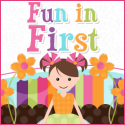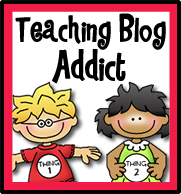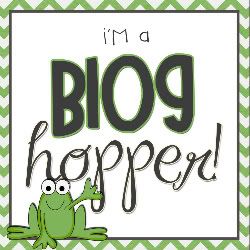One of my most favorite math lessons uses this wonderful Eric Carle book, Rooster's Off to See the World. I love these lessons because they are easy, use very few materials, incorporates literature, and they are F-U-N!
Materials:
Book - Rooster's Off to See the World By: Eric Carle
white drawing paper (one per kid for each day)
crayons, pencils, or markers
*This is a 2 day lesson.
Day 1:
You will see how well your students can make growing patterns. Read aloud the first half of the book and when the rooster meets up with the five fish {to go see the world} you stop reading any further.
Ask your kids to predict {in their heads, not to share yet} what they think will happen next. I usually like to reread the first half again just in case someone wasn't listening. Then, I send them off to their seats so they can draw, write numbers or words about what they think will happen next in the story. After you've given them about 10-15 minutes to work on their papers bring them back together and share everyone's predictions.
This is a great way to see if your kids can count, predict, explain, and some might even express higher order thinking. One year, I used a students work to show his giftedness! {It was such a cool answer!!}
Day 2:
Review some students responses from the day before {real quick} and then reread the book. PAUSE where you had stopped reading on Day 1 {for dramatic effect} and then read the rest of the book. The kids will be surprised to find that after the 5 fish join the group, the crew finds out that they are scared, homesick, or hungry and decides to go home. Typically no one will have predicted that, so it is a big shocker!!
After you have read the story and discussed the sequence of events, you will ask the students if they can recall how many animals TOTAL went on the trip {in their heads, not to share yet.} You may want to reread the story again before you send them off to work. Remind them that they can find their answer using pictures, numbers or words. Send them off to their desks to work on their papers. Give them about 10-15 minutes then meet together to share our answers.
This is a great Number Sense assessment. You can see if your students can: use a variety of methods to represent information about a series of groups, can they combine several quantities accurately, and what strategies do they use to solve their problem.
Here are some student examples:
Note: This is NOT an original idea. It is out of our old Investigations series, but I love it so...
If you have the book, spend a few days on something fun for your firsties!








































































































